Affiliate disclosure: This post may contain affiliate links. Please see our Privacy Policy.
Growing blackberries is easy, and the bigger problem is sometimes just keeping them contained. Learn how to grow blackberries at home for big crops of delicious berries with minimal effort.
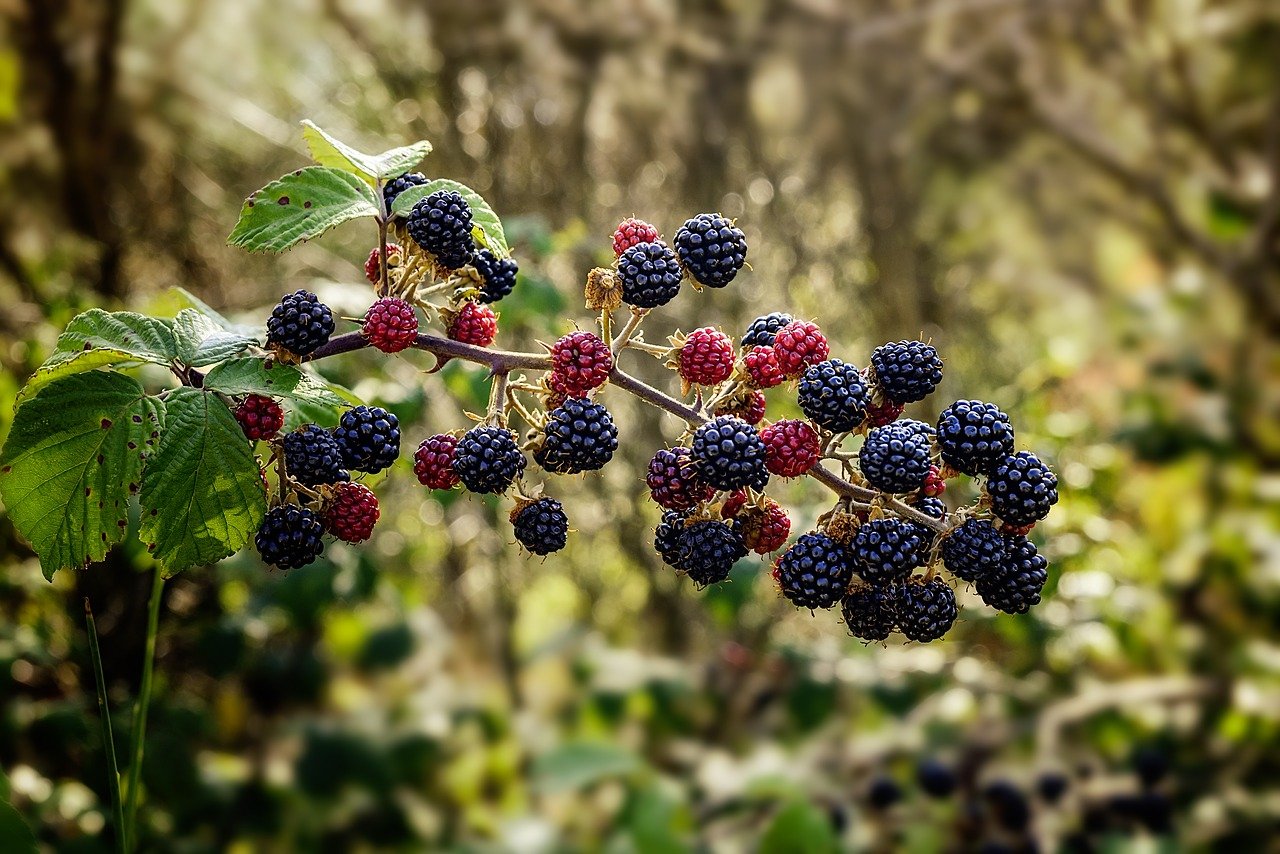
Blackberries are perfect for backyard gardeners; they taste delicious and make delicious homemade jams, jellies, pies, and more. Learning how to grow blackberries is easier than you might think.
Wild blackberries have always grown on our homestead, but a few years ago we put in a big patch of cultivated blackberries that have extra sweet, juicy fruit.
Blackberries grow similarly to raspberries. These plants produce their fruits on canes that grow out of the plant’s crown, which is at ground level. The crown and roots are perennial, but the canes are biennial, so they only live for two years.
While wild blackberries just form a tangle and keep on going, that’s not the most productive management strategy. You need to prune these bushes to give room for the next canes to come up and produce fruits. The fruits only grow on second-year canes, and after that, the biennial canes die back as new ones mature.
Pruning back dead canes ensures that the plants get plenty of airflow (to prevent fungal diseases) and sunlight so they can produce the sweetest fruit. It also makes it a lot easier to pick the ripe fruit. That said, blackberries still thrive even with neglect, so don’t be intimidated!
Where Do Blackberries Grow?
Most blackberries grow in USDA hardiness zones 5 to 8, but there are hardy varieties that thrive down to zone 4. (Some wild varieties are hardy into zone 3 as well.)
Other specialty varieties are more tender and are only hardy to zone 6. You just have to be careful about variety selection. Here in zone 4 Vermont, we can’t grow all the varieties that thrive in the pacific northwest, but we still have literally dozens of choices.
Wild blackberries grow throughout North America but especially in the Pacific Northwest along with eastern states. These berries prefer to grow in north, temperate regions and don’t do as well with tropical heat.
Outside of the US, there are native blackberry varieties throughout Asia, Europe, North, and South America. We know that they date back over 2,000 years in Europe, and this means that you’ll be able to easily find varieties that grow well in your specific climate and region.
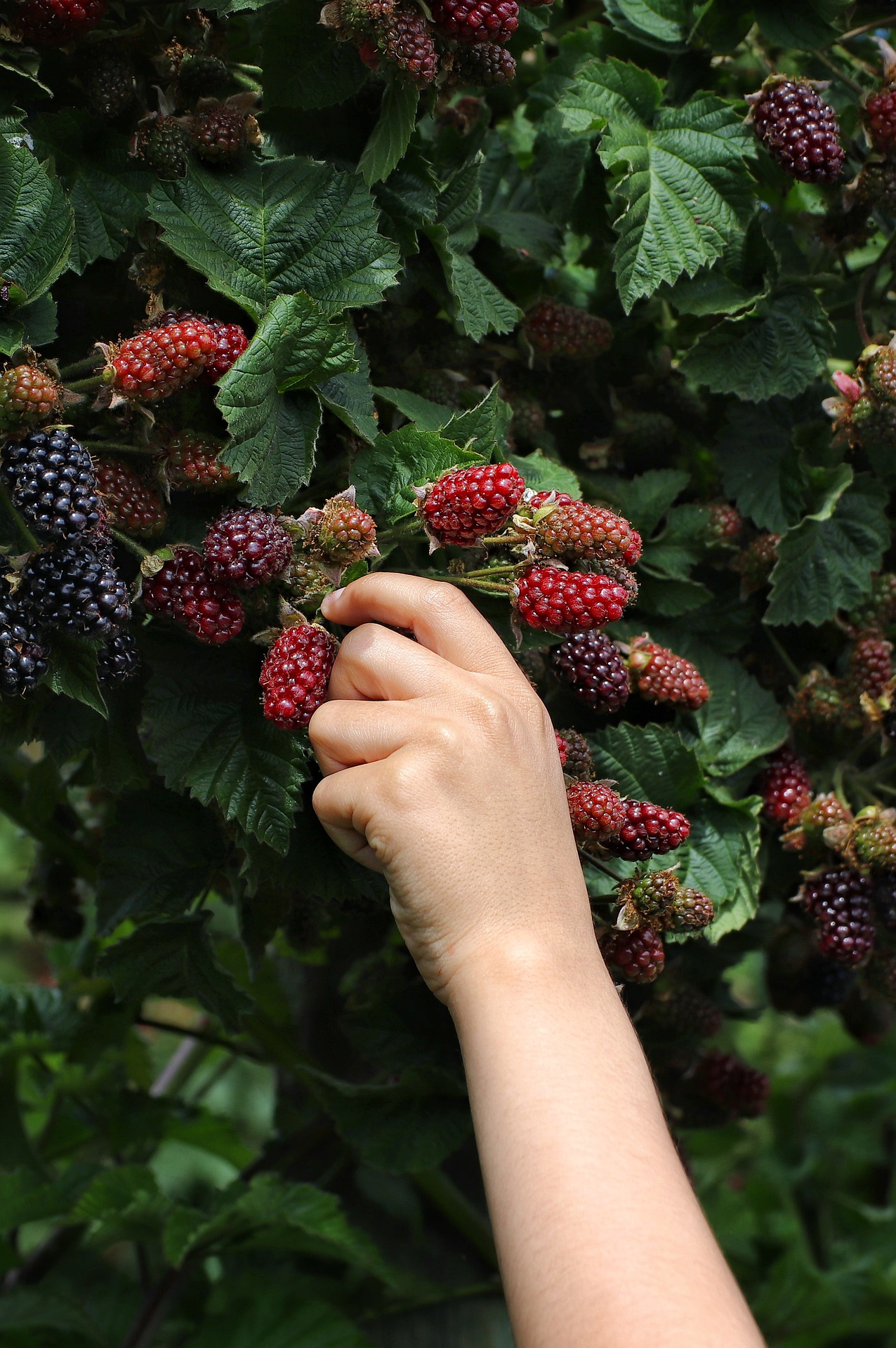
The Best Blackberry Varieties to Grow
There are three types of blackberries:
- Erect thorny blackberries
- Erect thornless blackberries
- Trailing thornless blackberries
When looking at what type of blackberry varieties to grow, you have to consider which one of the types you want and pick a cultivar from there.
Thornless varieties can be nice for picking, but they’re also preferred by wild animals who don’t want to be pricked by thorns any more than people do. Thorned varieties tend to be harder as well, so that’s what we grow.
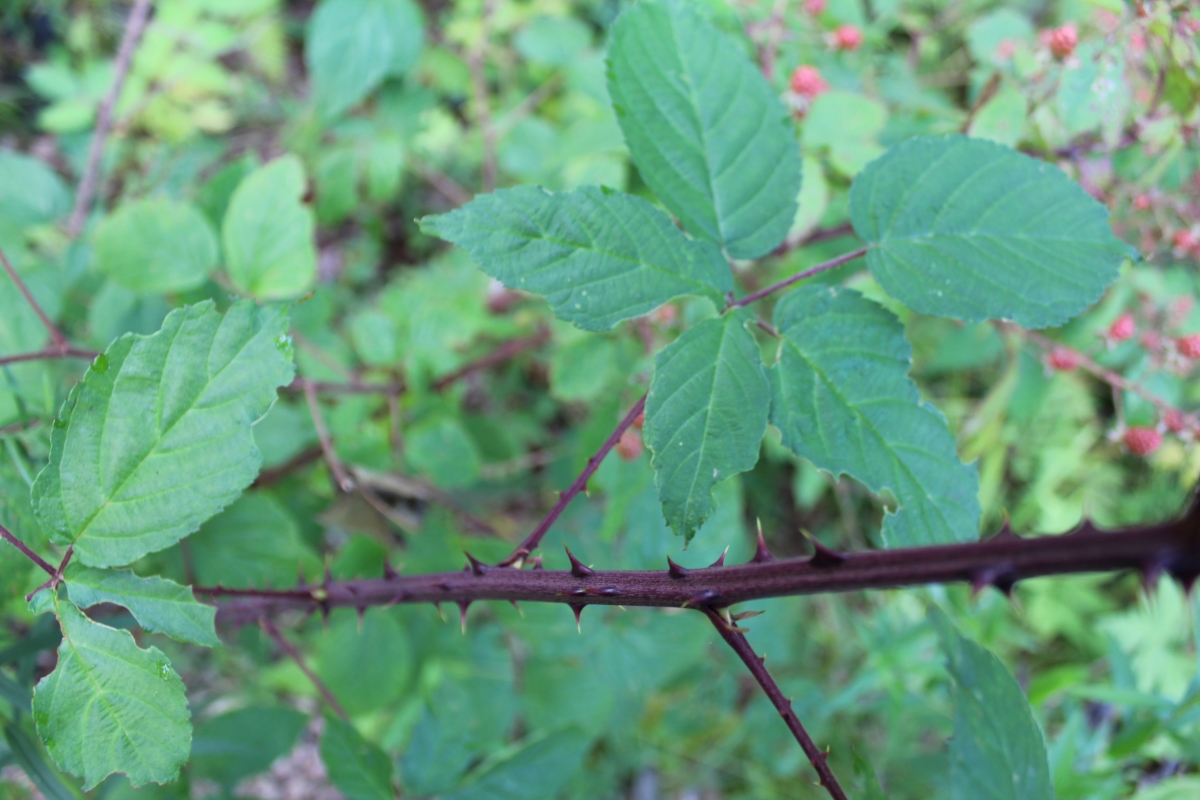
Erect Thorny or Thornless Blackberry Varieties
Erect varieties are the most common throughout the eastern United States. The canes grow vertically and are known for being vigorous growers. This is the type that commercial gardeners have, but they’re great for home gardeners. You might need to provide a support system when the plants are large.
Blackberry varieties with erect canes are sturdier and less damage-prone than trailing varieties. Erect blackberries are either thorny or thornless; you can guess what the difference is there!
Here are some varieties to consider growing.
- Arapaho Erect Thornless – This type grows in zones 6-8 and is known for being a vigorous grower. The plants produce extra-tasty blackberries with tiny seeds, ripening in mid-June.
- Chester Thornless – This type grows in zones 5-8; it’s an all-around excellent blackberry plant that produces firm but not tart berries. It’s a productive variety that tolerates hot, dry weather and ripens in July.
- Kiowa Thorny – This plant produces the largest blackberries – up to three inches long! The plant grows well in zones 5-8 and blooms earlier and longer than others. Expect the bushes to ripen in early June.
- Natchez Thornless – Here is one of the earliest blackberry bushes for the season in zones 6-8. This is a semi-erect, thornless variety that produces large berries, ripening in early June.
- Ouachita Thornless –This variety grows in zones 5-9, producing high yields of berries resistant to rosette disease. The bushes are heat tolerant and ripen in June.
- Triple Crown Thornless -This plant grows in zones 5-9, known for being productive plants with the perfect blend of sweetness and tartness. The fruits are uniform size and easy to pick, ripening in early August.
If you happen to need extra hardy blackberry varieties for zone 4, here are a few choices: Black Satin, Chester, Darrow, Doyle, Nelson, Prime Jim, Prime Jan, and Prime Ark. (Nelson might be hardy as cold as zone 3, and is considered the hardiest cultivated blackberry variety.)
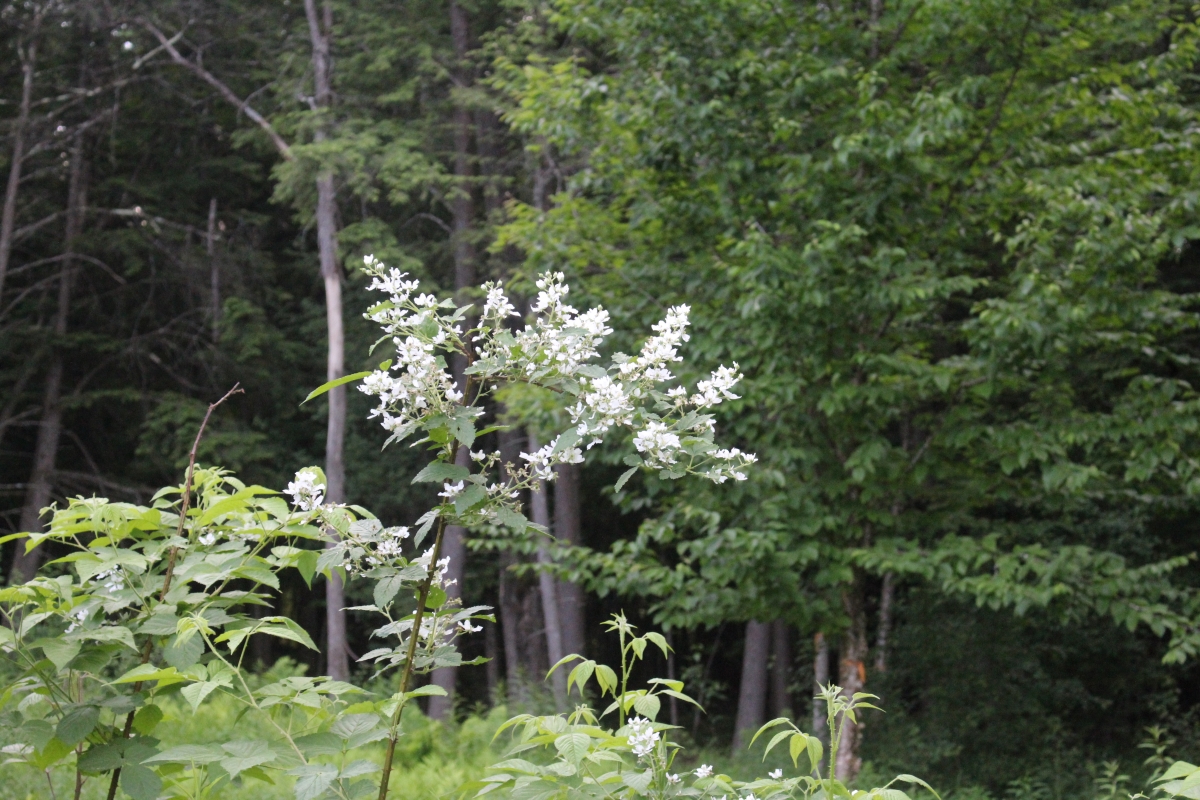
Trailing Blackberry Varieties
These blackberry varieties grow throughout the North American continent, but they’re most common in the Pacific Northwest. As the name suggests, trailing thornless blackberries have long canes; some reach up to 20 feet long, and they require a trellis, arbor, or some support form.
Trailing blackberries aren’t cold-hardy, and severe winters will kill the canes before they fruit. So, if you live in a colder climate, avoid these. These supposedly have some of the tastiest fruit, but most require zone 6 or 7 warmth. (Silvan is hardy down to zone 5, and we hope to try it here on our zone 4 homestead.)
- Columbia Star – This variety grows best in zones 6-8, known for producing large berries on vigorously growing vines. The fruits ripen in mid-July and are easy to pick by hand, perfect for home growers.
- Marionberry – This variety grows in zones 6-9, producing sweet-tart berries. It’s a popular variety in the Pacific Northwest, perfect for jams, jellies, pies, and more. The fruits ripen in July.
- Obsidian –This new blackberry variety grows well in zones 6-8, and it’s a disease-resistant, early ripening plant that produces heavy crops of large berries. These berries are perfect for fresh eating and making jams or jellies. The fruits ripen in July.
- Silvan – This variety grows well in zones 5-8, and it’s a cross between Marion and Orus 742. It produces delicious blackberries with a strong flavor, perfect for baking and making preserves. The fruits ripen in June and July.
- Wild Treasure -This is a thornless trailing variety that is perfect for backyard gardeners in zones 7-9. The vines are highly productive, producing fruits that are sweet, flavorful, and small.
Blackberry Soil Preferences
Before you can plant blackberries, you have to find the best place on your property to grow blackberries. Blackberries need to be planted in an area that receives full sunlight; that means they need to receive six to eight hours of sun each day to have an optimal berry yield.
If you have wild blackberries on your property, make sure you plant your blackberry bushes away from the wild ones because wild berry bushes often carry different diseases that might kill your plants. (Cultivated blackberries may have sweeter fruit, but they’re generally not as disease resistant as wild types.)
The soil needs to be fertile and well-drained, as blackberries (and other cane fruits) don’t like “wet feet.” Blackberries prefer to grow in slightly acidic to neutral soil with a pH range from 5.5 to 7.0. You can order a soil pH test to determine your range to help you properly amend it, if necessary.
Before you plant your blackberry bushes, make sure you add organic matter to enrich the soil. Adding compost is always a good idea because it ensures the soil drains well while adding vital micro and macronutrients that your bush needs for growth.
If you need to raise your soil pH, try adding lime. If you need to lower it, adding garden sulfur does the trick. For blackberries, it’s best to make any soil changes before you dig the hole and plant everything.
Make sure your soil drains well and is cultivated down about 18-24 inches deep before planting. This helps aerate the soil and allows the roots to grow without blockage. You want properly draining soil because it helps move water away from the roots, preventing waterlogged soil that causes roots to rot.
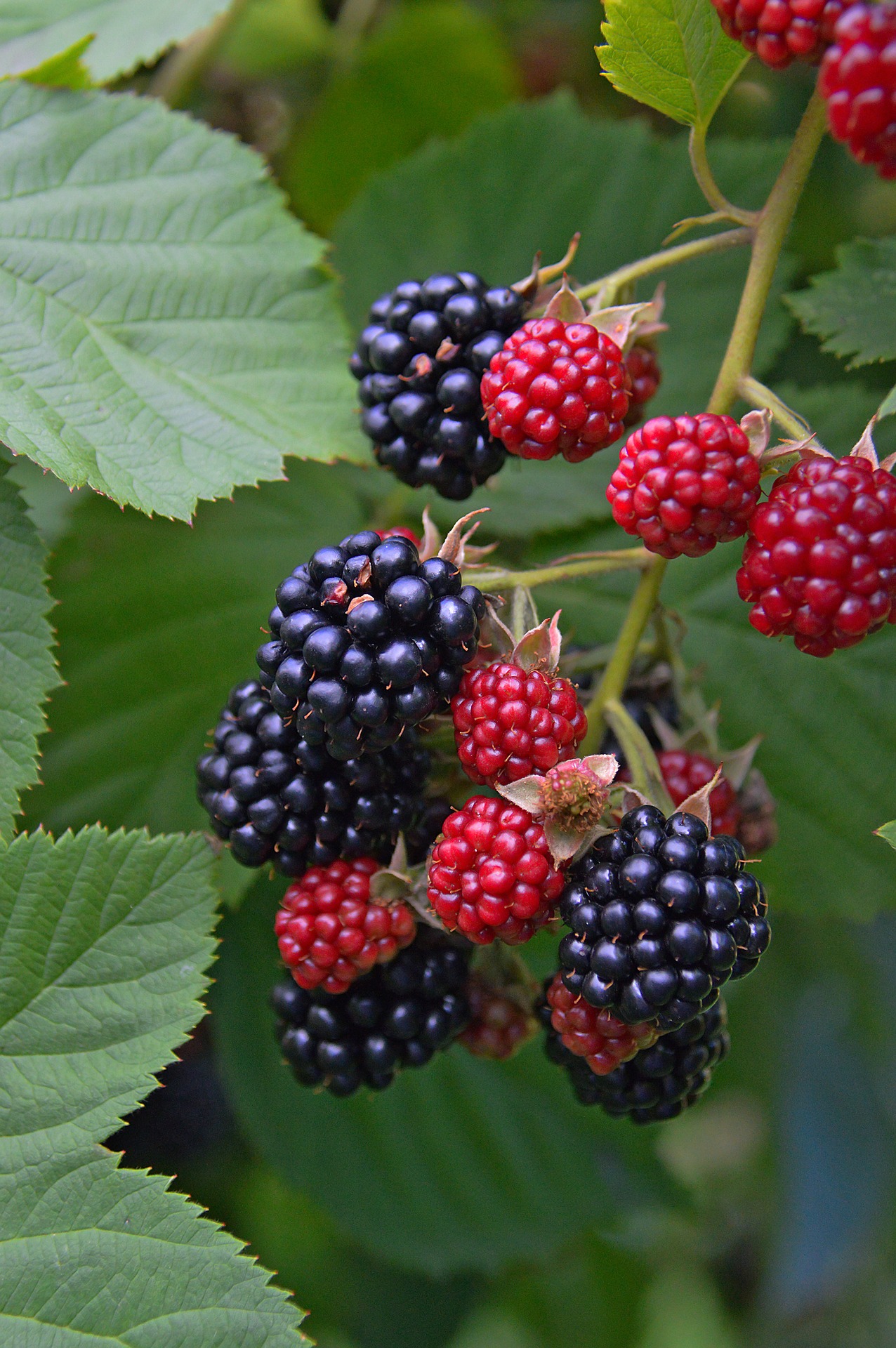
How to Plant Blackberries
The best time to plant blackberries is in the early spring, when the canes are dormant. You also can plant these bushes in the late fall, but they should be delayed until the spring if you live in an area that receives cold temperatures. The roots need time to establish before they can handle cold temperatures.
Blackberries are sold as dormant bare roots or potted plants from a garden nursery. Potted plants come in containers, but when you receive the bare roots, you might think the nursery sold you a dead bush – don’t panic. It’s a dormant plant with the roots but the soil removed. It’s normal.
Each blackberry bush needs to spread two to three feet apart to provide plenty of air circulation between the plants. This helps to prevent diseases, especially fungal infections. Mark where you want to plant each of your blackberries, then it’s time to plant.
Dig a hole that is twice as wide but just as deep as the container. For bare roots, the same applies because you need space to spread out the roots. Set the bush into the hole, and plant it so that the crown is at or just below the level where it grew before. Gently spread out the roots in the hole and fill the hole back with the remaining soil.
Make sure to pat down the soil and water deeply to help the roots establish. Lay a three to four-inch layer of organic mulch around the bushes. Blackberry plants have shallow roots, so mulch helps protect the roots while keeping the soil moist nearby.
How to Grow Blackberries From Cuttings
Blackberries propagate easily from cuttings. So, if a friend has a few blackberry plants, this is an easy way to grow your edible plant varieties. There are two ways to grow blackberries from cuttings: tip rooting and stem cutting.
Stem cutting is an easy method. Cut a four to six-inch piece off the canes’ tips and put them into a pot of moist potting soil. Use a mixture of peat and sand for this; it works best. Make sure to keep your potted cutting in a bright yet shady place until the roots start to develop. Mist the plant to keep the soil moist. Using rooting hormones work, but don’t feel the need to run and buy some if you don’t have it.
Another method is called tip rooting, and you take the tip from one cane that is growing on your property and pull it to the ground, covering it with soil. Within a few weeks, it’ll grow a root system, and that’s why you cut it away from the parent plant.
This method works if you already have blackberry plants on your property, but if you don’t, tip rooting isn’t an option for you.
Growing Blackberries from Seed
Growing blackberries from seed is possible, but it takes a lot of patience to do so. It will take longer to have a harvest, but it’s considerably cheaper to grow from seeds. Blackberry seeds require cold stratification in the first year, and in the second year, they will produce a few berries. Don’t expect a large harvest right off the bat!
Put damp peat moss in a plastic bag and place the blackberry seeds in the bag. Keep it closed, storing it in your refrigerator for three to five months. The temperature needs to be between 33-35℉ for proper cold stratification of blackberry seeds.
After this step, take a container and place stones at the bottom to ensure your plants will have proper drainage. Use potting soil mixed with compost, and make sure the potting soil mix stays moist. Plant the seeds and wait, often watering to keep the soil moist. It takes time for these seeds to germinate.
Keep the plants inside, tending to them, until the following spring. At this time, it’s safe to plant them outside in the proper location.
Blackberry Plant Care
After planting, it’s a smart idea to mulch around your bushes. Mulching helps retain moisture in the soil while suffocating out the weeds that compete for the nutrients in the ground. Always keep a thick layer of mulch around your bushes; you’ll need to refresh it each year. It should be a minimum of three inches deep.
Blackberry bushes need plenty of water to grow and ripen berries, but at the same time they don’t tolerate swampy soil. Make sure your plants receive one inch of water per week, at minimum, and if the temperatures increase, you’ll need to provide the bushes with more water, especially while fruiting.
Regular watering is essential, and since they need both consistent water and well-drained soil…it’s a tricky balance. The key is to make sure they get watered small amounts regularly, rather than trying to soak them.
In the early spring, your bushes need to be fertilized with an all-purpose fertilizer. Look for a 10-10-10 or 16-16-8 granular fertilizer that you can spread around your blackberry bushes.
Pruning is an essential part of blackberry plant care. How you prune your bushes will differ based on the type of blackberries that you grow, but the general idea is to remove the old canes that already bore fruit and let the new canes grow in their place. You also need to remove any diseased, broken, or crossing canes.
Branches shouldn’t cross, or they might damage the other branches, leaving the plant open to diseases.
Harvesting and Preserving Blackberries
Blackberries should only be picked when they’re entirely black. Mature berries are plump, firm, deep black, and come off of the plant easily. After harvesting, berries stop ripening, so you want to gather only the ripe ones.
Berries ripen often on the bushes, so you have to make sure you check your plants every few days to make sure you don’t miss the berries.
Blackberries are perishable and only last a few days once harvested, so you have to keep them refrigerated. If you leave them on the counter, they’ll go bad and rot quickly.
Our family loves to eat as many of our blackberries fresh as possible, but they freeze well. We use frozen blackberries in smoothies and pies year-round. If you want to freeze blackberries, wash them well and spread them on a baking sheet, and flash freeze them for one hour before storing them in a plastic bag.
We also make both regular blackberry jam and seedless blackberry jelly for canning, and I can whole blackberries as well, which are wonderful as a dessert topping (or eaten right out of the jar).
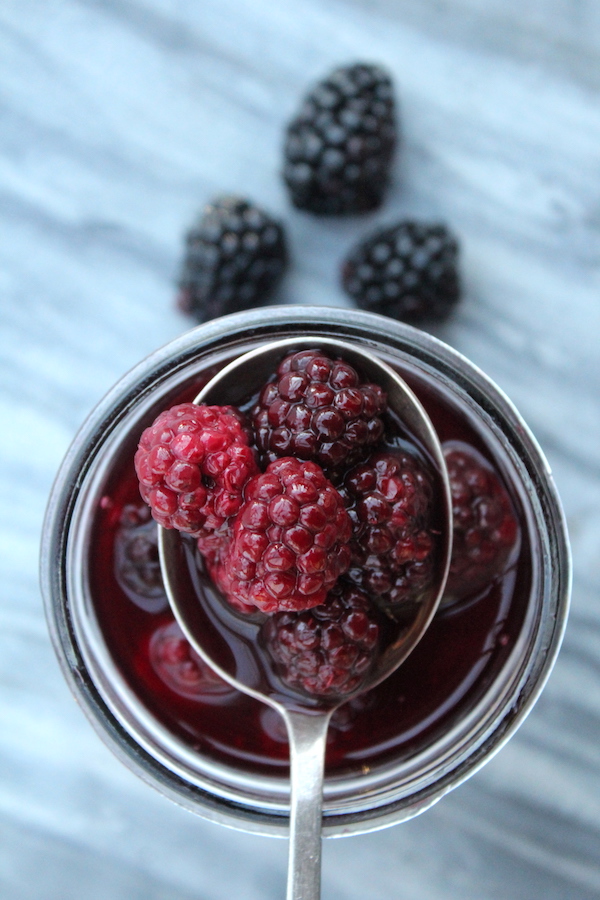
Berry Growing Guides
Looking for more berry growing guides?
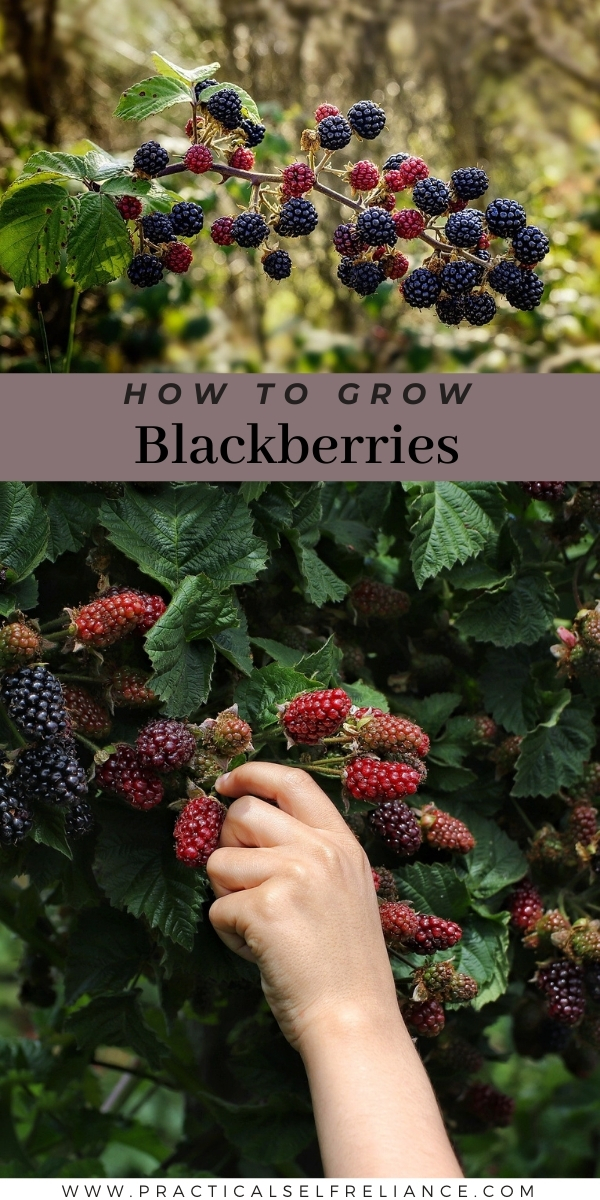




Hi…
I have a thornless blackberry plant that my neighbor gifted to me this past spring. It has been in a pot this year but, I want to make a blackberry “patch” in the garden. It has already sprouted roots on the ends of 2 canes whose tips were touching the ground. Can you tell me how to proceed..? How long of a cutting should I make above the roots..? Also, after I remove the tips for planting, can I take additional cuttings from the “momma canes” and start roots from them..? How much is too much when it comes to cuttings..? I want as many cuttings as possible but I don’t want to damage the momma plant.
The tips are what you want to use for your cuttings. You want each cutting to be about 4 to 6 inches.
The Triple Crown Blackberry does make the most impressive Red wine – almost port like in flavour and I have won many prizes with it in Europe. I would recommend it to those inclined in the wine direction.
Thanks for this. I have a thorn bush that is trellised. I get berries but never as much as I need. Also, have a problem with insects at times. Invaders….
You’re welcome.